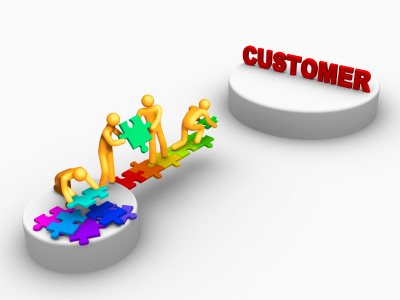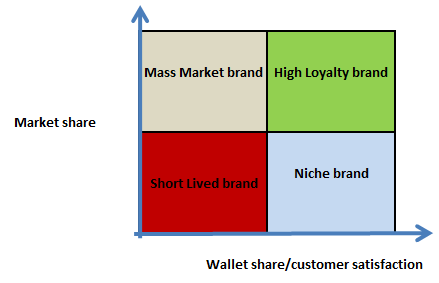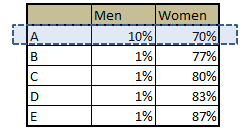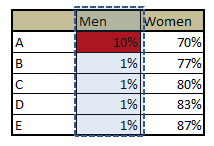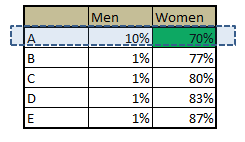Whatever industry you work in, you will hear following line in almost all the top management presentation :
“Our target for this is year is to become more customer-centric.”
What is customer centricity? Why does everyone want to move to a more customer-centric platform? How is it better than product centric approach? How will analytics play a key role in this transition of industries from product centric to customer centric offerings? This article will provide you answers to all these complex question.
Let’s begin with a delightful futuristic scenario. You wake up in the morning. With your eye lashes opening, your curtain opens, opening a beautiful scenery. The glass window adjusts the brightness of the surrounding and your bed gradually inclines to help you get up. All these solution are so synchronized that it will be impossible for different companies to give different solutions to the same customer. It has to be a single company providing a complete solution to the customer.
Now imagine a second scenario, you get out of home for office and bunch of sales man encircle you trying to force-fit their solutions on to you. Some one is trying to sell you a market linked insurance even though the sales man himself is not convinced that the product is fit for anyone, someone trying to sell you a credit card even though you already have purse full of them etc. Which one do you want to be your future ? If you say first one, you already know what customer centricity means.
[stextbox id=”section”] The contrast : [/stextbox]
There are only two ways a company can operate. First, it launches a new product basket and finds the best fit customers for this product. It modifies the target customers time to time to suit the product basket. Second, the company launches a product and find the best fit customers for this product. Having identified the most profitable customers, it tailors the product, offering and services as per the customer need. The former is called the product centric approach and the later is called the customer centric approach. Following are the definition of the two which I find best suitable to explain the two approaches :
A product-centric competitor focuses on one product at a time and tries to sell that product to as many customers as possible.
A customer-centric competitor focuses on one customer at a time and tries to sell that customer as many products as possible.
Let’s consider a business case to understand the two approaches.
[stextbox id=”section”] Business Case : [/stextbox]
There are two competitors of Laptop retail market in India with same revenue in the beginning of 2013. Retailer X has many stores in India and, hence, sells Laptop with a very aggressive marketing to capture the highest market share. Retailer Y, on the other hand, is a new retailer with limited outlet. If Retailer Y does not do something exceptional retailer X can easily crush Y’s business given the high amount of its visibility. This is what Retailer Y does :
It analyzes the daily laptop accessories/services requirement of each existing customer. Finally it is able to establish the life-cycle of each customer. For example, any customer needs an additional speaker for the laptop in 3 rd month of purchase, an additional hard disk after 6-9 months of purchase etc. It further drills down to customer level identifying the exact need of each customer with time. Retailer Y thus decides to venture into some of these laptop accessory supply as well. The overall strategy helped retailer Y to get higher wallet share from their existing customers and new acquisitions.
By the end of 2013, both the retailers experienced the exactly same growth. Following is the mathematical workout with some illustrative figures to bring out this picture :
[stextbox id=”grey”]
New Revenue = Old Revenue * ( 1 + Growth in wallet share ) * ( 1 + Growth in market share )
Company X : Growth in wallet share = 10% , Growth in market share = 50%
Company Y : Growth in wallet share = 50% , Growth in market share = 10%
[/stextbox]

Every company tries to find the right balance between the wallet share and the market share growth. Companies who is able to achieve both becomes the market leaders in the industry. Following graph shows the positioning of brands with difference in approaches.
[stextbox id=”section”] Which approach is better in a longer run? [/stextbox]
Given a choice between product centricity and customer centricity approach, today companies prefer latter. There are multiple reasons for the same. Following are few of them :
1. Product-centric companies have the life span of their products. They are vulnerable to fluctuations in the market. In case the taste of the customer changes, the market of such companies completely dies off. Also, if the cost of the product increases and the customer is not ready to pay for this increase, the company has to cut down on their profit margins.
2. The main objective for a product-centric company is to maximize the value created by each product, while the financial objective for a customer-centric competitor is to maximize the value created by each customer. But unlike products, customers have memories. This means that the business a customer generates for you tomorrow, either as a repeat customer or as a reference for other customers, is based largely on their memory of how well they were treated today.Hence, making the approach more customer centric not only ensures higher wallet share but also incremental wallet share by referrals and good faith generated. Referral or word of mouth is the most effective and responsive way of marketing .
[stextbox id=”section”] How does analytics help the organization drive the customer centric approach : [/stextbox]
As a marketing analyst we build marketing strategy day in day out. Here is a case which will demonstrate how customer centric approach gives an edge over competitors in this dynamic market. There is a garment shop which has monopoly in the market. It currently has 5 customers and the owner has built a predictive model to find the propensity of a customer to buy Men or Women garment for each customer. We will focus only on one customer i.e. A to make the discussion simpler. Following are the probabilities for each customer to buy the two products.
The owner found that for the Men apparels A has the highest propensity to buy whereas for Women apparels E has the highest propensity to buy. Given the cost constraint he sends only a Men apparel discount voucher to customer A.
Shop 1
Customer A is happy to have got the voucher and increases his spend on Men apparel, leading to an increase in the overall spend of A in this shop. This is a product centric approach which works perfectly fine till there is a monopoly. But such monopoly hardly exists in real world. One of the fundamental principle of economics says
” There will an entry of a new player in the market till the point that marginal gain of the new player becomes negative on his entry.”
Hence monopoly in a free market is impossible. Let’s analyze the same problem with a new competitor in market. Assume that the probability to buy apparels and the customer for shop 2 (the competitor) is same. But this time shop 2 takes a customer centric approach. It targets A with a product offering he has higher propensity to buy i.e. women apparel.
Shop 2
Let’s assume that the customer A does not change his entire purchase pattern because of these offers, but changes his preference of shop for different product. This will happen very often in the real world except in the case of established loyalty. Following was his spend on the two shops before the offer was made :



[stextbox id=”section”] End Notes : [/stextbox]
The two approaches, namely product centric and customer centric, are mutually exclusive and can be implemented along with each other. However, customer centricity automatically helps company to grow its market share by the virtue of growing loyalty base who become promoters of the company. Apple is a great example of such behavior. Apple provides a wide variety of solution and has updated its offering keeping customer always in the center. We will like to hear your thoughts of how companies are driving customer centricity in their strategies.




